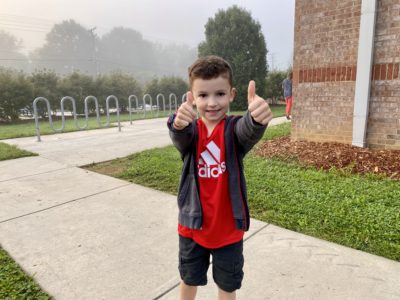Share this story
- What measures are currently in place to protect students and staff as North Carolina’s public schools start this school year? #nced
- Experts emphasize the importance of integrating social and emotional learning into classroom curriculums to help students develop healthy ways to manage their emotions. #nced
|
|
Editor’s note: According to EdWeek, there have been over 200 school shootings in which at least one person was killed or injured since 2018. As a new school year begins in North Carolina and school safety is on the minds of school communities, we are resharing this article of best practices.
Highlights
- Now is the time for North Carolina to reevaluate its violence response and prevention strategies and to implement best practices.
- To prevent school violence, school officials and local law enforcement must understand the warning signs for students in crisis and intervene accordingly.
- School mental health services are crucial to crisis intervention for students at risk of resorting to violence.
- Integrating social and emotional learning (SEL) into classroom curriculum helps students develop healthy ways to manage their emotions.
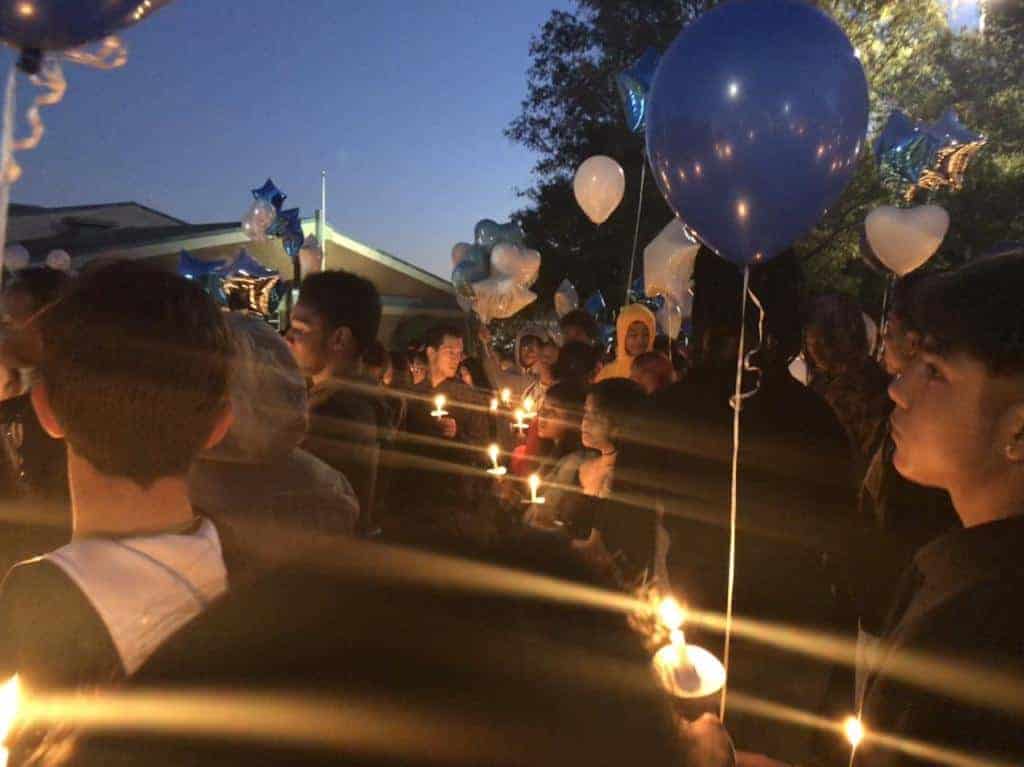
In 2022 alone, 84 people have been killed or injured in a school shooting nationwide as of Aug. 30, according to Education Week’s school shooting tracker.
While school shootings remain statistically rare, the start of this school year has seen many districts in North Carolina reviewing safety procedures and working with local law enforcement on efforts to address school safety.
Just on Thursday, two students were stabbed and one of the students died in a physical altercation inside Northside High School in the Onslow County School District.
This article takes a look at North Carolina’s existing school safety practices and best practices as evidenced by research and school safety experts.
FBI’s response to school violence
North Carolina’s safety practices are informed in part by protocols and resources developed by the Federal Bureau of Investigations (FBI). In response to the Sandy Hook Elementary School shooting in 2012, the FBI developed the “Run, Hide, Fight” model.
The model suggests that when faced with an armed perpetrator, individuals should first attempt to run to a secure location if it is safe to do so. Otherwise, they should hide and lock or barricade any entrances with a plan to defend themselves if their location is compromised. As a last resort – and only when the run and hide alternatives are no longer viable – individuals should prepare to fight off the attacker and attempt to disarm them.
In a school setting, students follow the guidance of the adults in the classroom as to which of these three safety protocols is suitable for their circumstances.
Katherine Schweit, a retired FBI special agent who created the “Run, Hide, Fight” model, suggested that school officials and teachers tend to overlook the importance of the “run” component of the model, often defaulting to the “hide” response. She argues that by teaching students and teachers to lock their doors and hide rather than run, the efficacy of the model is undermined. Though North Carolina’s school safety resources embrace all parts of the “Run, Hide, Fight,” model, evaluations of the model during routine school drills could determine whether, in practice, any component of the three-part protocol is being overlooked.
Sign up for the EdDaily to start each weekday with the top education news.
N.C. school safety efforts
Much of North Carolina’s state-specific violence prevention and response strategies are developed and overseen by the North Carolina Center for Safer Schools.
Operating under the Department of Public Instruction (DPI), the Center for Safer Schools spearheads the state’s in-school violence prevention strategies. The Center provides technical assistance, trainings, and resources on a variety of school safety issues for students, faculty and staff, and local law enforcement. Their mission is to “maintain schools as centers of learning and not fear.”
Below is a look at the Center’s 2019 Resource Guide on School Safety, covering many of the issues implicated in violence prevention.
The Center established the NC Task Force for Safer Schools in 2013 to serve as an advisory body. The Task Force endorsed a five-year State Action Plan for School Safety in June 2021.
The plan outlines a series of school safety goals and objectives to be achieved across state government, communities, and schools. The Task Force acknowledges that in the coming years, school safety measures will need to evolve to changing circumstances. This document acts as a baseline for their long-term efforts.
State law also requires each school in the state to draft and submit a School Risk Management Plan, with the input of law enforcement, the Department of Public Safety (DPS), and other relevant agencies. The plan documents school-specific tactics for preventing, mitigating, and responding to school threats. As EdNC reported in June, many districts have had challenges submitting these plans through the online system even though they have developed and shared them with local law enforcement.
In August, the Center for Safer Schools held the Resiliency Information Support Empowerment (RISE) Back to School Safety Training. During the RISE training, the chair of the N.C. House K-12 Education Committee, Rep. John Torbett, R-Gaston, said that the state’s schools “are as safe as they can be.”
So, what measures are currently in place to protect North Carolina’s students?
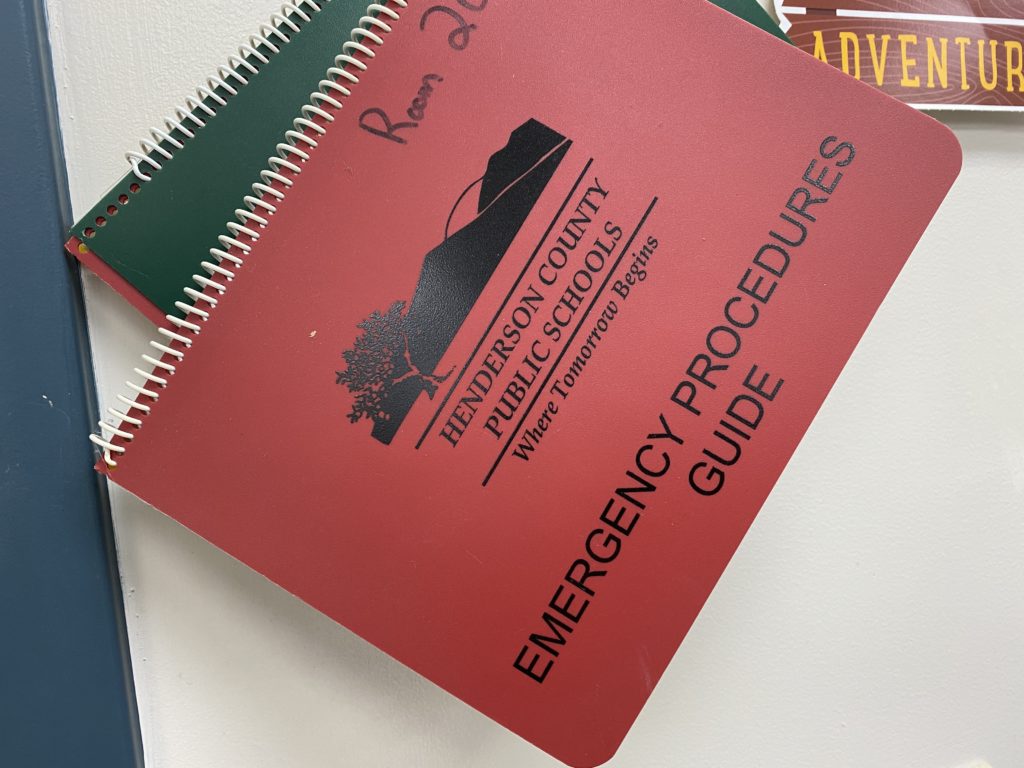
Anonymous reporting
A central effort by the Center for Safer Schools is the implementation of an anonymous tip system. Given that most school shooters leave warning signs or tell others of their plans of violence, anonymous tip systems are common in schools across the country and deemed best practice.
Students are in tune with their school environment and are often the first to know if there is a threat of violence, which is why they need to feel comfortable enough to voice their concerns and have an outlet to do so. That is where the Say Something Anonymous Reporting System (Say Something) comes in.
Say Something is the platform North Carolina students use to anonymously report threats of violence. Rollout of the phone application, website, and telephone hotline versions of Say Something began in 2019, and since then the program has received hundreds of tips each year.
In June 2022, an N.C. House K-12 Education Committee meeting revealed that since August 2021, there have been over 250 credible threats of school attacks in North Carolina. Schools across the state are continuing to adopt Say Something, joining the more than 23,000 schools across the country that currently use the system.
School resource officers (SROs)
Assigning school resource officers (SROs) to school campuses has become more popular in recent years. The Center for Safer Schools defines SROs as “a certified law enforcement officer who is permanently assigned to provide coverage to a school or a set of schools.”
Since the Uvalde shooting, the National Association of School Resource Officers (NASRO), which trains school-based law enforcement, has begun advocating for SROs to be assigned to “every school at every level” across the country.
In 2018, the General Assembly appropriated $35 million to launch a School Safety Grants Program through DPI that provides districts with funding for various school safety efforts, including hiring and training SROs. In the most recent state budget passed in June, lawmakers appropriated an additional $15 million for the School Resource Officer Grant program, focused on elementary and middle schools, and increased the state match from $2 to $4 for every $1 provided by a district. Another $26 million was included in the budget to help districts provide an SRO in every high school.
Though DPI does not record the number of SROs assigned to schools, research estimates that 79% of North Carolina schools, serving 84% of the state’s students, had SROs assigned to them on a rotating basis during the 2020-21 school year.
Here is a list of schools that received grant funding to hire and/or train an SRO for the 2020-2021 and 2021-2022 school years.
Despite the prevalence of SROs in schools, research is mixed on the effects of SROs in schools.
In 2021, Dr. Jillian Peterson and Dr. James Densley published The Violence Project: How to Stop Mass Shootings, the culmination of years-long research evaluating all mass shootings in the United States since 1966.
Peterson and Densley found that for all school shootings recorded in their database, the presence of an armed SRO did not significantly reduce the number of injuries. Instead, when controlling for variables associated with lower survival rates, like the number of gunmen or the type of firearm, shootings that occurred at schools with SROs had fatality rates three times higher than shootings in schools without SROs.
A recent study of SROs in North Carolina middle schools found that SROs reduced the incidence of serious violence offenses, largely through the reduction of serious violence offenses by white students. However, the same study found that the presence of SROs increased the number of out-of-school suspensions and referrals to law enforcement, a common critique of introducing SROs in schools.
The Center for Safer Schools denies any relationship between SROs and increased student criminalization, stating that well-trained officers abiding by NASRO principles can help decrease juvenile arrests.
The FBI has published resources that discuss how to enhance the relationship between an SRO and a school community. These resources acknowledge that assigning SROs to schools can be privy to pitfalls if officers do not successfully integrate into the school environment or are unable to create an atmosphere of trust with students. Nonetheless, SROs remain a primary strategy for school safety in states across the country, including North Carolina.
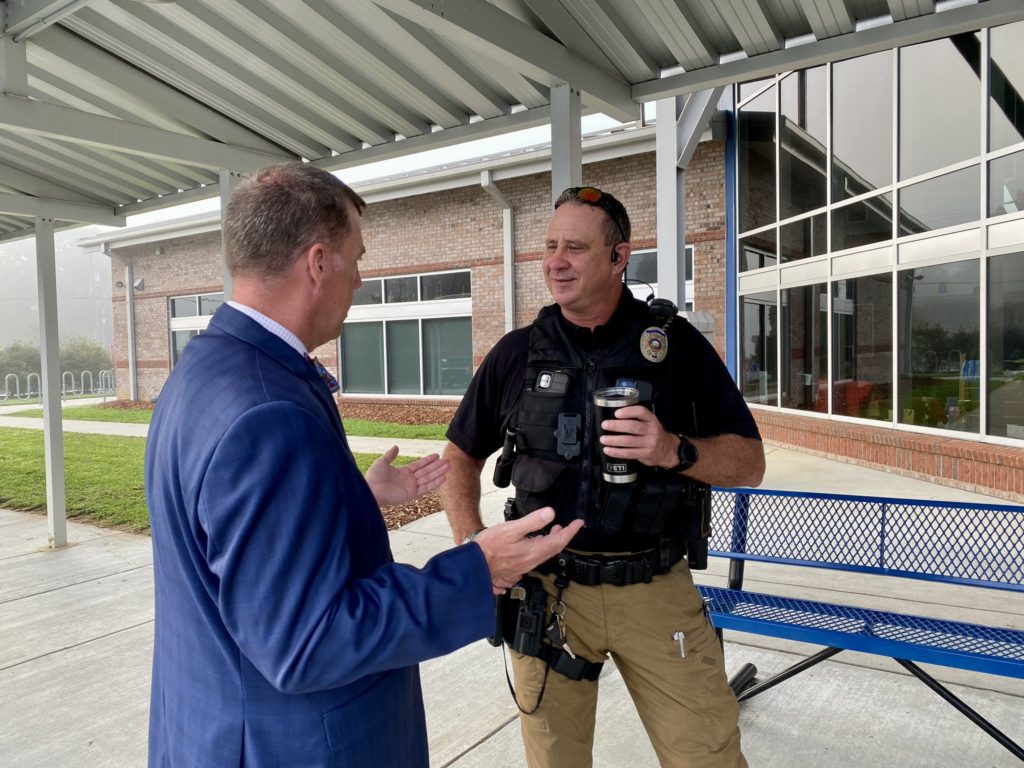
The role of local law enforcement
Local law enforcement plays a crucial role in the response to active threats in our state’s schools. Current protocol advises neutralizing the threat as soon as possible, even if only one officer is on the scene to do so. Ensuring that local law enforcement is familiar with the school grounds and has a plan for action can help officers feel confident enough to make that call.
Repetitive trainings that challenge routine can reinforce a swift and efficient response to violence. Having local police departments conduct school walk-throughs as part of these trainings is a central component to preparing response strategies to be employed in the event of an emergency. Prior to the start of the school year, multiple school districts across the state partnered with local police departments to conduct large-scale school safety trainings mimicking active assailant scenarios on school grounds.
In addition to these exercises, the Buncombe County Sheriff’s Office is also integrating their Real Time Intelligence Center (RTIC) into their response strategies. RTIC gathers intelligence from various resources, like live video surveillance from inside schools, which is shared with deputies in real-time and can be used to inform response strategies.
In August, the Madison County sheriff’s office gained national attention after stating that they will place assault-rifle style weapons in all six schools in the district. Sheriff Buddy Harwood told the Asheville Citizen Times that by placing weapons on school grounds, SROs will be able to quickly respond in the event of an emergency, saving time and potentially student lives.
A survey of Western North Carolina sheriffs revealed that SROs also have access to assault-rifle style weapons in Haywood and Transylvania counties, although they may not be kept on school grounds.
In the wake of the Uvalde shooting, some states are promoting policies to arm teachers in the classroom. While the idea has gained political traction in recent years, polls continue to show that the majority of teachers and parents oppose the idea.
Experts warn against keeping guns in schools, given research showing that access to firearms is significantly associated with an increase in unintentional firearm deaths. The fear is that keeping firearms on school grounds may increase opportunities for in-school shootings, either accidentally or as a result of breached access to the weapons, posing a greater risk to students and teachers.
Preventing school violence before it occurs: Knowing what to look for
Establishing violence response strategies is crucial to managing crisis scenarios, but states should also focus their efforts on best practices to prevent violence in their schools before it occurs. These strategies should be rooted in an understanding of who the perpetrators of in-school shootings are and what triggers violent outbreaks.
Peterson and Densley’s research explores these topics and more. This interactive web page utilizes the professors’ research to provide users with insight into the frequency of school shootings and the common characteristics of perpetrators. The data reveals that school shooters are more likely to be young white males with connections to the schools they target. They are almost always current or former students, which is why it is important for schools to know what to look for.
Patterns in the perpetrators of mass shootings show that many witness and/or experience violence in their childhood homes, exposing them to trauma at a young age. Four out of five perpetrators reach a crisis point instigated by a trigger – like a break up or the loss of a loved one – that is identifiable to people in their circle but too often ignored. These characteristics, combined with access to firearms and having someone to blame for their lot in life, can set the stage for mass violence.
Peterson and Densley’s research is careful not to perpetuate stereotypes of violent perpetrators as monsters but as individuals in need of help. There is no one profile for school shooters, but these patterns can inform the warning signs of violence and the best practices for prevention.
Prioritizing mental health access
Understanding warning signs is crucial, but alone it is not enough to deter struggling students from resorting to violence. Given the significant role childhood trauma and crisis plays in the lives of perpetrators of school violence, it is important that teachers, school officials, and law enforcement can identify students in crisis and provide the necessary resources for recovery.
The Center for Safer Schools received a grant to work with mental health professionals and law enforcement to develop Crisis Intervention Team-Youth (CIT-Y). CIT-Y is an 8-hour training for SROs and other law enforcement that trains officers to identify students in crisis and to combat the misunderstandings of youth behaviors that lead to student criminalization.
In addition to training SROs and local law enforcement, providing mental health care in schools is crucial, especially for students from underserved communities who are less likely to be able to receive mental health treatment outside of the school setting. This is easier said than done, however.
North Carolina has just one psychologist for every 2,527 students, with the recommended ratio at 1:500. While the 2021 state budget included funding to ensure every district has at least one school psychologist, this falls woefully short of the recommended ratio.
To address this nationwide issue, the U.S. Department of Education announced two new grants in July totaling $300 million for school mental health services. The money will be used to hire qualified mental health professionals in schools and recruit and train those interested in entering the field. More information on which schools will be prioritized for funding is to come.
This funding is coupled with the recently enacted Bipartisan Safer Communities Act, which provides billions of dollars to help states, cities, and districts expand school mental health services and promote school safety.
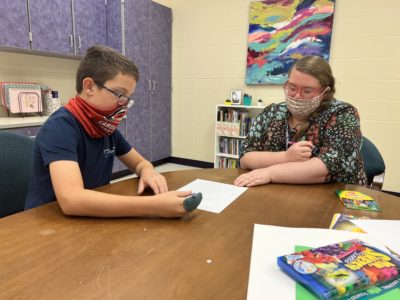

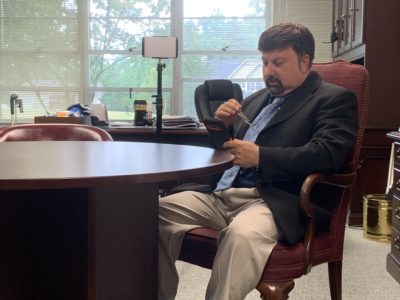
However, given the current reality that mental health professionals are inaccessible in many North Carolina schools, teachers and other school personnel have to assume critical roles in crisis intervention.
Peterson’s and Densley’s work describes a system-wide approach to intervention wherein schools establish response teams made up of administrators, teachers, law enforcement, parents, or peers. The teams meet regularly and share information regarding student behavior, scheduling check-ins with students in need.
It is vital that members of response teams form meaningful relationships with students. Doing so will alert them if and when a student is exhibiting atypical behaviors signaling a crisis. It will also provide isolated students with companionship that can dissuade violent thoughts brought on by loneliness. The Sandy Hook Promise’s Start With Hello campaign details how striking up conversation with isolated students can foster a culture of kindness.
Peterson and Densley suggest that teachers integrate social and emotional learning (SEL) into their curriculum. SEL teaches students how to handle stress and grief, resolve conflicts, manage their emotions, and more. The concept has already been integrated into the N.C. State Board of Education’s Strategic Plan and into the curriculum of schools across the state.
While these prevention practices are not exhaustive, they emphasize the importance of centering compassion in crisis intervention. These strategies should be used to inform the next steps North Carolina takes in its school safety efforts.
Fighting off fear
In August, a group of current and former school principals from across the country whose schools were once the target of mass violence released the following guide to recovery. United under the Principal Recovery Network, these school leaders hope that this guide can be used to provide strength to future principals as they tend to the needs of teachers, students, parents, and the broader community following a school tragedy.
This school year, North Carolina’s school leaders, teachers, students, and parents are confronting renewed fears of violence. Their fears cannot be normalized. It is time for North Carolina to concentrate its safety efforts not just on how to respond to violence, but also on how to prevent it before it occurs.
To do so, North Carolina must pursue research-based solutions to school safety. Efforts should incorporate trauma-informed practices and social and emotional learning to replace cycles of violence with cycles of care. Doing so will bring compassion into our state’s classrooms and uplift the Center for Safer Schools’ mission to maintain schools as centers for learning, not fear.
Recommended reading
